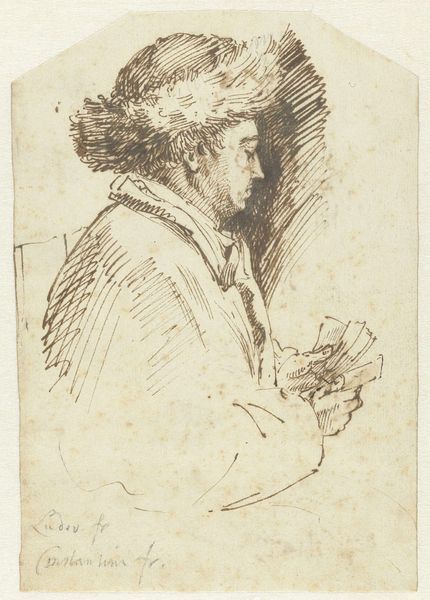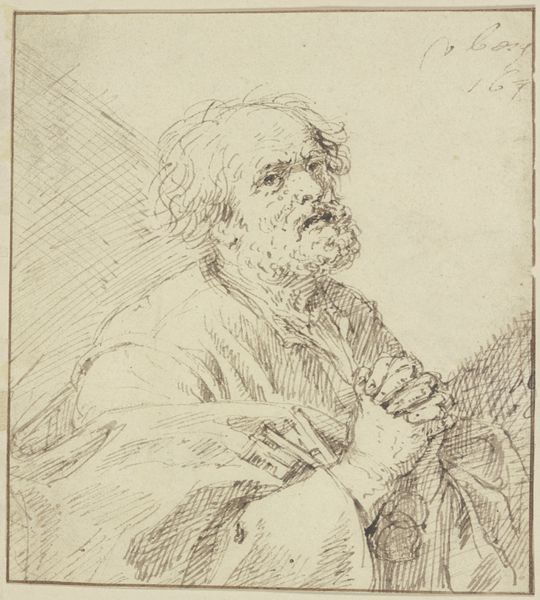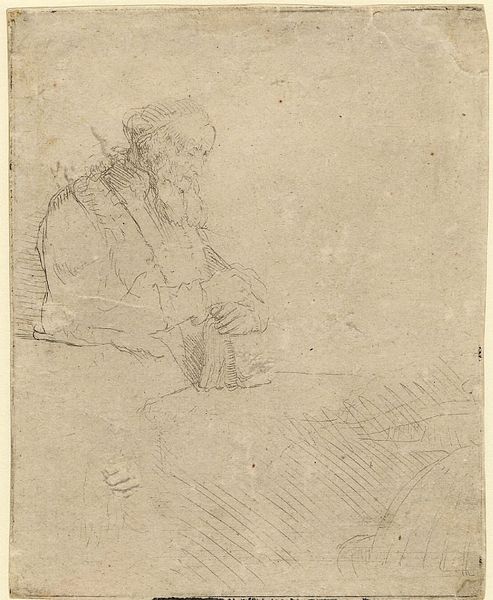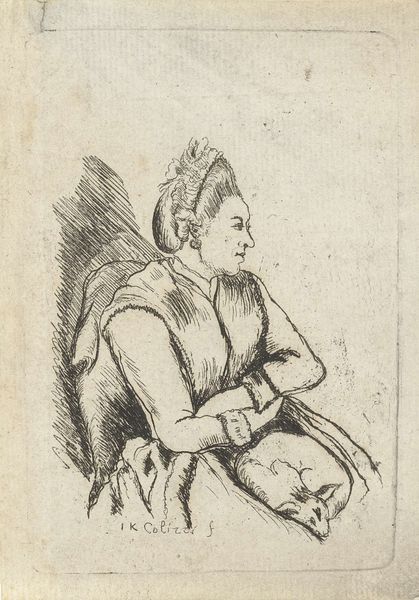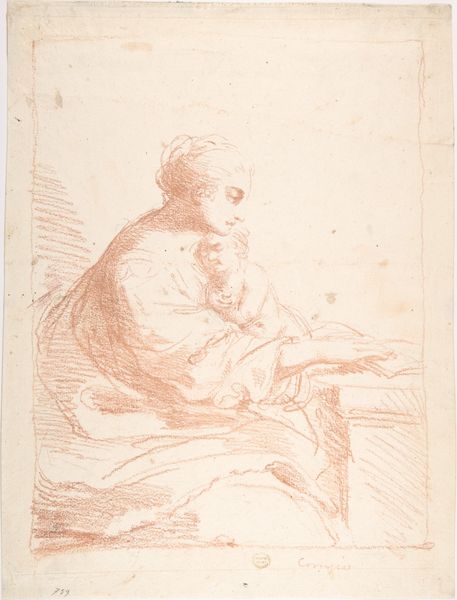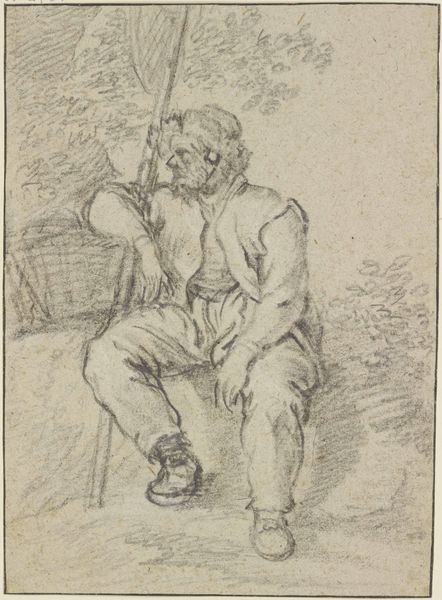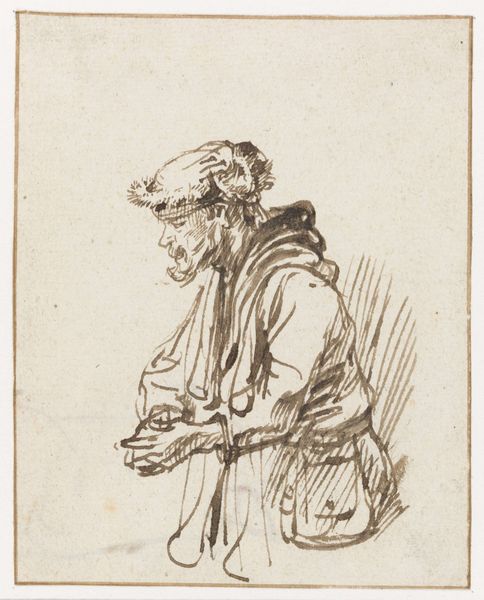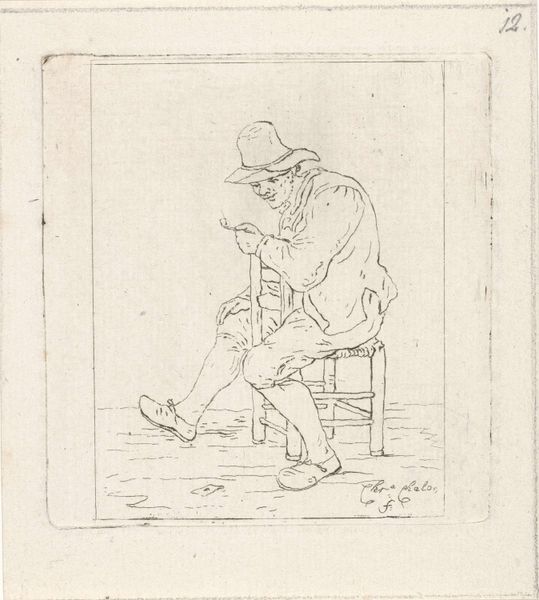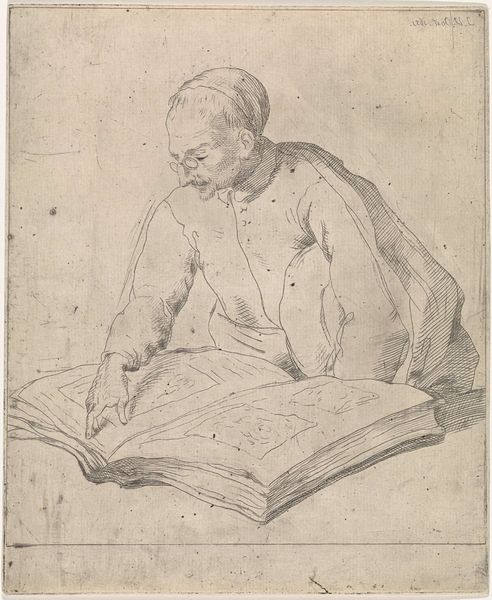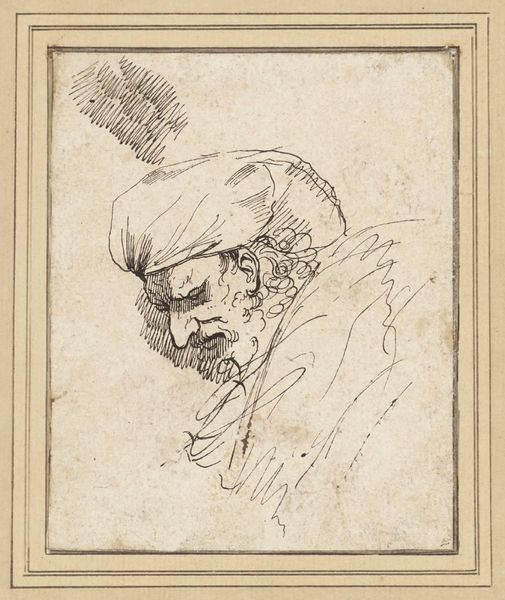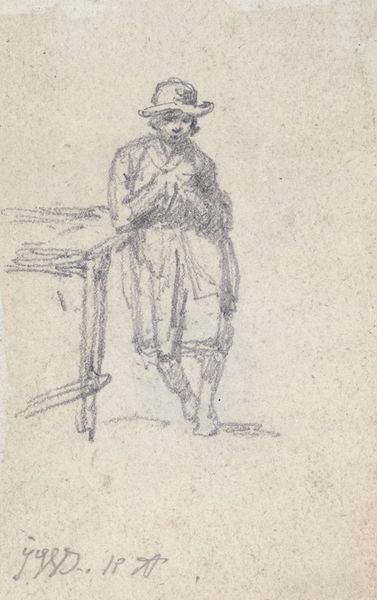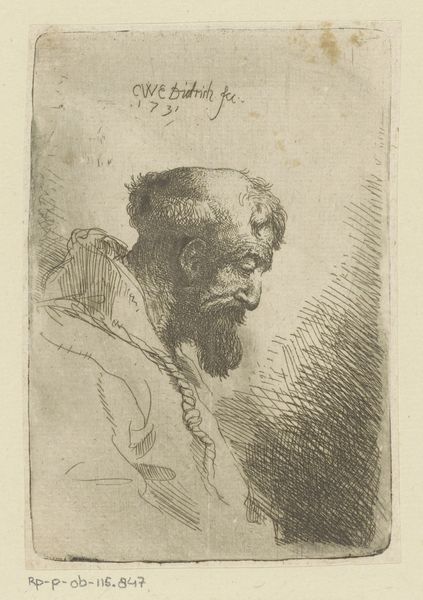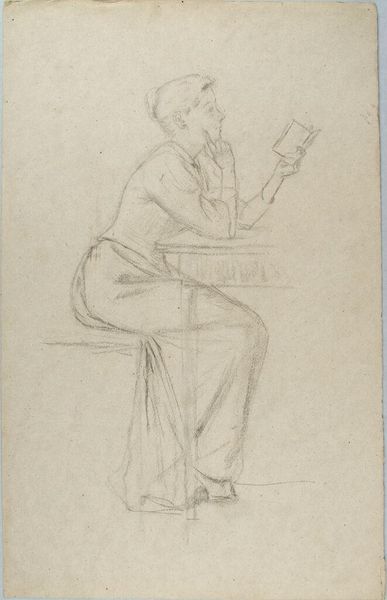
drawing, print, etching
#
portrait
#
drawing
#
baroque
#
dutch-golden-age
# print
#
etching
#
pencil sketch
#
line
Dimensions: height 77 mm, width 67 mm
Copyright: Rijks Museum: Open Domain
Curator: Here we have Willem Drost's etching, "Lezende Vrouw," created sometime between 1650 and 1655. Editor: Immediately, the intense concentration in the woman’s bowed head strikes me, intensified by the stark lines and shadowing. The work is dominated by this central, introspective form rendered in monochrome line work, evoking an emotional intimacy. Curator: Indeed, the power of Drost’s work resides in its compositional structure. Note the layering of lines, a dense network that builds form and volume through hatching and cross-hatching, yet remains deliberately unfinished, exposing the artist’s process. The diagonal lines suggest not only shadow but also the act of viewing, the transient gaze. Editor: I am compelled to consider Drost's etching technique here. The choice of etching allowed for detailed linework, but the reproduction of the print speaks to the broader accessibility of images at that time. Who was producing the paper and ink? What are the economics behind printmaking and what does it tell us about who might have owned the work? Curator: Your points underscore the crucial function of prints in disseminating images in the Dutch Golden Age. Drost capitalizes on the technical qualities inherent in etching to convey both visual information and a sense of atmosphere. Look closely at how the varying density and direction of the etched lines contribute to our understanding of the woman’s textured garments and head covering, shaping our view through directional mark-making. Editor: Looking at her worn clothing and the lines etched around her face, I wonder about her access to resources. Etchings, though multiples, still held value and catered to a particular class. I’m wondering about her position in Dutch society during that era; the means to engage with such material were probably not evenly distributed. Curator: Ultimately, "Lezende Vrouw" becomes a study in formal and psychological restraint through a careful choreography of line. Editor: The intersection of class and labor certainly casts "Lezende Vrouw" in a richer light and really prompts questions about consumption and representation.
Comments
No comments
Be the first to comment and join the conversation on the ultimate creative platform.
